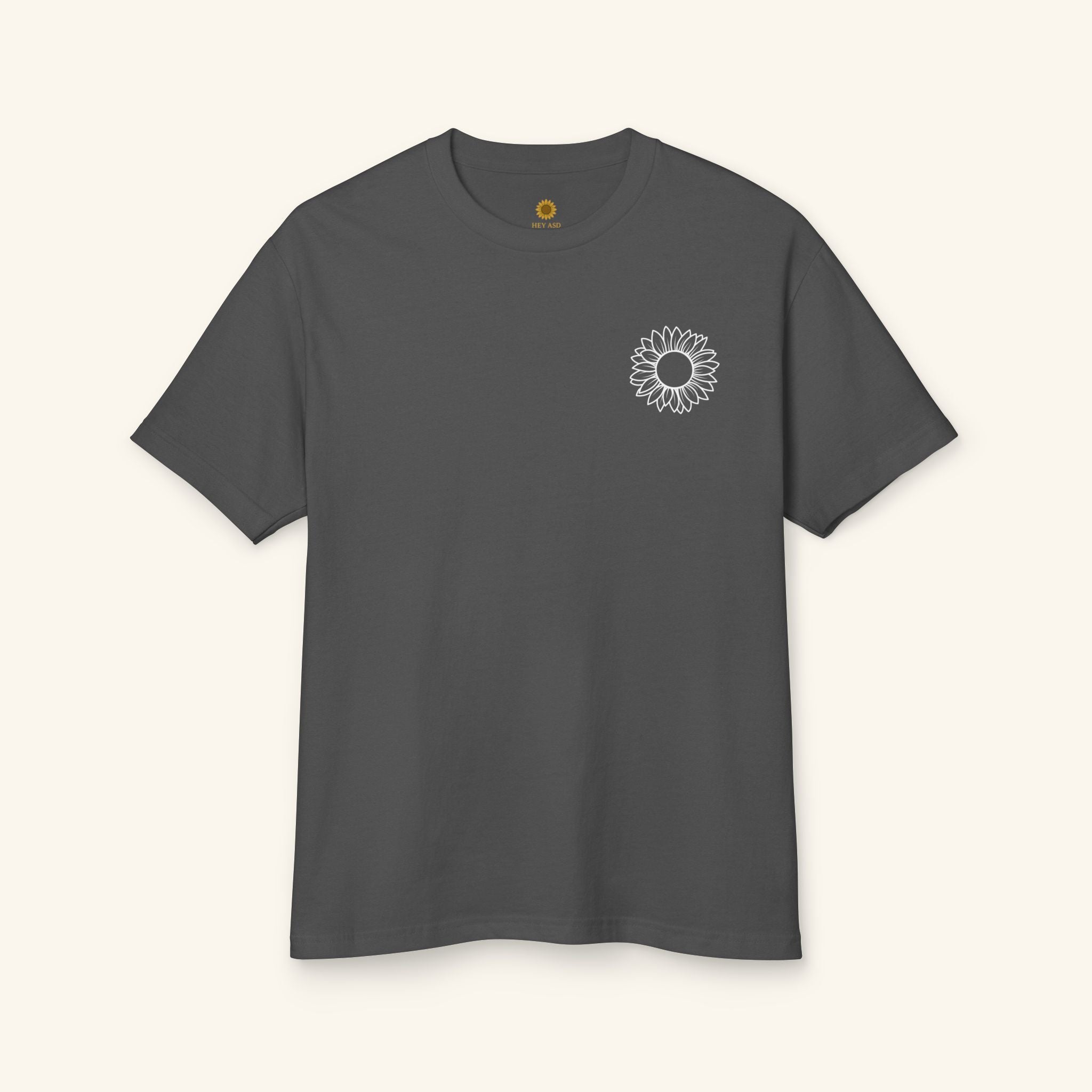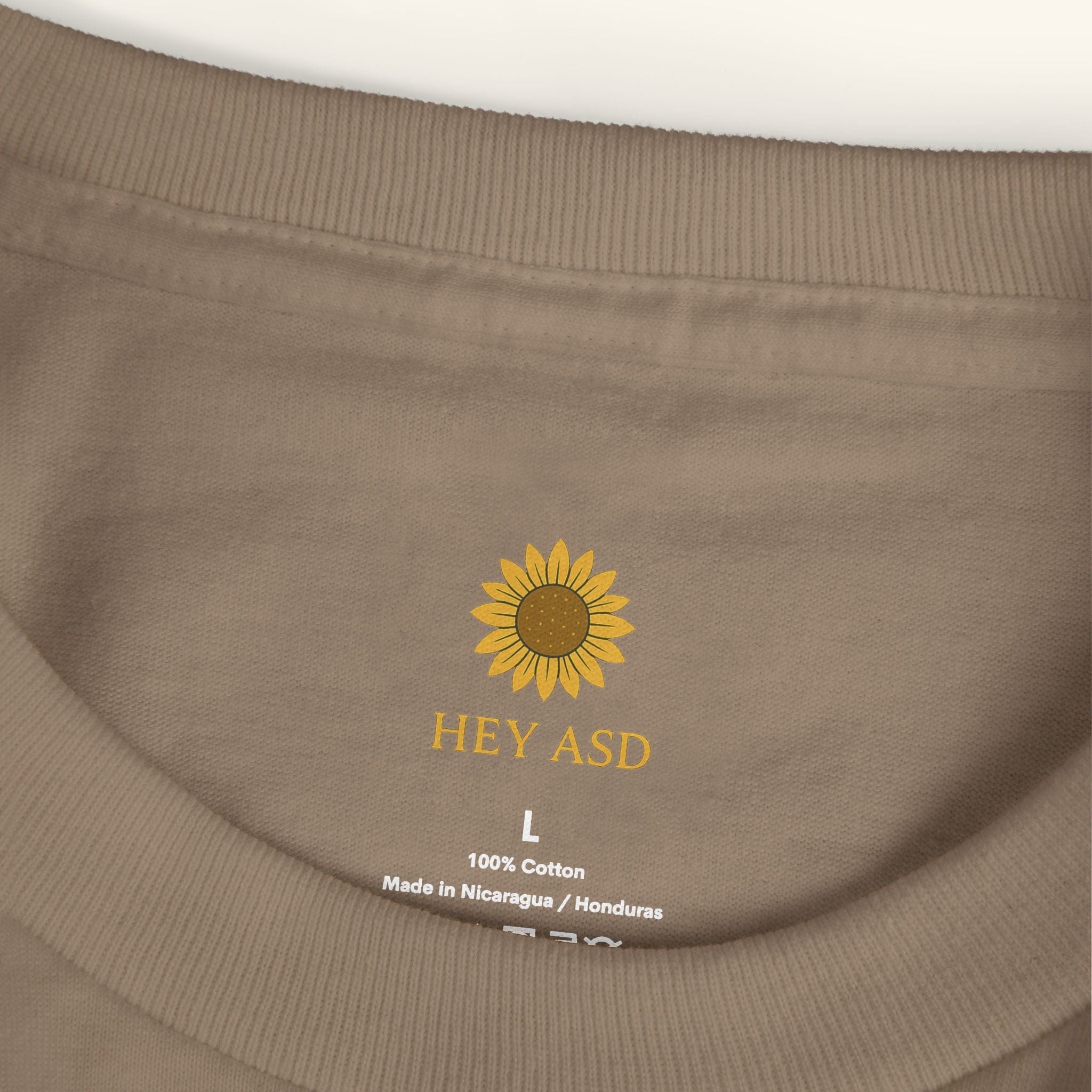Art Beyond Words: How Autism Art Exhibitions Foster Empathy and Understanding

Written by the HeyASD Editorial Team
Art exhibitions focusing on autism have become instrumental in cultivating empathy and understanding within society. These platforms provide a unique opportunity for individuals to engage with the expressive qualities of art created by people on the autism spectrum, thus fostering a greater sense of empathy and awareness. The emotional significance of the artwork showcased in these exhibitions allows attendees to immerse themselves in the experiences and perspectives of individuals with autism, leading to a deeper understanding and appreciation of their unique talents and challenges. One example that underscores the impact of autism art exhibitions is the inspiring collection of Autism Wall Art presented by Heyasd.com. This collection features a diverse range of artistic expressions, each visually stunning and carrying deep emotional meaning. By providing a space for these artworks to be exhibited, autism art exhibitions create opportunities for individuals to engage with the art, thereby promoting empathy and understanding of the autism community.
Autism art exhibitions play a pivotal role in fostering empathy and understanding by providing a platform for individuals to engage with the unique expressive qualities of art created by individuals on the autism spectrum. For instance, the Radical Inclusion Traveling Art Exhibition, curated by Andrea Moriarty, features collaborative artwork by six young artists with autism and six professional artists, highlighting the social impact of open dialogue, integrated communities, and inclusion. This exhibition not only celebrates the diverse perspectives and mutual learning between artists but also elevates adults with disabilities to a place where they have value and influence in the community. Such examples of successful autism art exhibitions demonstrate the profound impact of these platforms in promoting empathy and understanding.
Art, in its various forms, has an incredible ability to foster empathy and understanding. It transcends linguistic and cultural barriers, allowing individuals to connect with each other on an emotional level. This is particularly evident in the context of autism art, where the unique expressive qualities of artworks can have a powerful impact on empathy-building. For instance, the inspiring collection of Autism Wall Art offered by Heyasd.com showcases a diverse range of artistic expressions that carry deep emotional meaning. These artworks not only provide a platform for individuals with autism to express themselves but also offer the general public an opportunity to gain insight into the experiences and perspectives of individuals on the autism spectrum. Through these artworks, viewers can gain a deeper understanding of the emotions, thoughts, and sensory experiences of individuals with autism, ultimately fostering empathy and compassion.
The Power of Art in Fostering Empathy
Art, in its various forms, has an incredible ability to foster empathy and understanding. It transcends linguistic and cultural barriers, allowing individuals to connect with each other on an emotional level. This is particularly evident in the context of autism art, where the unique expressive qualities of artworks can have a powerful impact on empathy-building. For instance, the inspiring collection of Autism Wall Art offered by Heyasd.com showcases a diverse range of artistic expressions that carry deep emotional meaning. These artworks not only provide a platform for individuals with autism to express themselves but also offer the general public an opportunity to gain insight into the experiences and perspectives of individuals on the autism spectrum. Through these artworks, viewers can gain a deeper understanding of the emotions, thoughts, and sensory experiences of individuals with autism, ultimately fostering empathy and compassion.
Furthermore, art serves as a universal language for cultivating empathy, transcending barriers and facilitating emotional connections between individuals. When individuals engage with autism art exhibitions, they are provided with a unique opportunity to step into the world of the artists and gain a deeper understanding of their experiences. This direct engagement with the art can significantly contribute to empathy-building, as it enables visitors to connect with the artists on a personal and emotional level, breaking down barriers and promoting understanding. The emotional resonance of the art displayed in these exhibitions facilitates a deeper connection and appreciation for the experiences and emotions of individuals with autism. By showcasing a diverse range of artistic expressions, these exhibitions allow the general public to gain insight into the inner world of individuals on the autism spectrum, thereby promoting greater empathy and understanding.
 Autism Art Exhibitions and Empathy-Building
Autism Art Exhibitions and Empathy-Building
Autism art exhibitions play a pivotal role in fostering empathy and understanding by providing a platform for individuals to engage with the unique expressive qualities of art created by individuals on the autism spectrum. For instance, the Radical Inclusion Traveling Art Exhibition, curated by Andrea Moriarty, features collaborative artwork by six young artists with autism and six professional artists, highlighting the social impact of open dialogue, integrated communities, and inclusion. This exhibition not only celebrates the diverse perspectives and mutual learning between artists but also elevates adults with disabilities to a place where they have value and influence in the community.
Moreover, the emotional significance of the art displayed in these exhibitions facilitates a deeper connection and appreciation for the experiences and emotions of individuals with autism. By showcasing a diverse range of artistic expressions, these exhibitions allow the general public to gain insight into the inner world of individuals on the autism spectrum, thereby promoting greater empathy and understanding.
Creating Opportunities for Empathy-Building Through Autism Art Exhibitions Autism art exhibitions create an environment where individuals can engage with the artworks, gaining a firsthand experience of the unique perspectives and emotions conveyed through the art. The immersive nature of these exhibitions allows visitors to step into the world of the artists and gain a deeper understanding of the challenges and triumphs experienced by individuals with autism. This direct engagement with the art can significantly contribute to empathy-building, as it enables visitors to connect with the artists on a personal and emotional level, breaking down barriers and promoting understanding. The emotional resonance of the art displayed in these exhibitions facilitates a deeper connection and appreciation for the experiences and emotions of individuals with autism. By showcasing a diverse range of artistic expressions, these exhibitions allow the general public to gain insight into the inner world of individuals on the autism spectrum, thereby promoting greater empathy and understanding.
The Transformative Influence of Autism Art Exhibitions in Promoting Understanding and Empathy Autism art exhibitions have a transformative influence on promoting understanding and empathy within communities. For example, the Radical Inclusion Traveling Art Exhibition, curated by Andrea Moriarty, features collaborative artwork by young artists with autism and professional artists, fostering mutual learning and celebrating the value of unique perspectives within the community. This collaborative platform allows individuals with autism to express themselves artistically, fostering a sense of empowerment and belonging within the community. Moreover, the exhibition serves as an educational tool for typical peers, offering them an opportunity to gain insight into the experiences and talents of individuals with autism. Furthermore, these empathy-building activities contribute to the broader goal of promoting a culture of empathy and acceptance in school settings and communities. As individuals engage with the artwork and narratives presented at these exhibitions, they develop a deeper understanding and appreciation for neurodiversity. This heightened awareness leads to the creation of inclusive and supportive environments where individuals with autism feel valued and understood, while their peers develop empathy and compassion, resulting in tangible and positive changes in their interactions and relationships.
 Empathy-Building Tools for Autism
Empathy-Building Tools for Autism
Heeju Kim's Empathy Bridge for Autism has been widely recognized for its groundbreaking approach to fostering connections and building more inclusive communities. The virtual reality toolkit is designed to provide users with a firsthand experience of the challenges faced by individuals with autism, offering a unique opportunity to step into their world. Through the use of virtual reality, earphones, and a tongue-tying candy, the Empathy Bridge for Autism effectively simulates the sensory and communication difficulties associated with autism.
Moreover, the emotional significance of the art displayed in these exhibitions facilitates a deeper connection and appreciation for the experiences and emotions of individuals with autism. By showcasing a diverse range of artistic expressions, these exhibitions allow the general public to gain insight into the inner world of individuals on the autism spectrum, thereby promoting greater empathy and understanding.
Components of the Empathy Bridge for Autism and Their Impact on Fostering Empathy and Inclusion The Empathy Bridge for Autism, designed by Heeju Kim, provides a comprehensive experience of the challenges faced by individuals with autism. It aims to foster empathy and understanding by allowing users to immerse themselves in the sensory and communication difficulties associated with autism. The use of virtual reality, earphones, and a tongue-tying candy effectively simulates the experiences of individuals with autism, providing a unique opportunity for individuals to gain valuable insights into their daily challenges. This immersive experience serves as a powerful tool for promoting greater empathy and inclusion within communities, as users develop a deeper understanding and appreciation for the experiences of individuals with autism. Moreover, the feedback from users who expressed feeling overwhelmed and isolated after using the Empathy Bridge for Autism underscores the effectiveness of this toolkit in evoking empathy and understanding for the experiences of individuals on the autism spectrum [2].
 Impact of Autism Art Exhibitions
Impact of Autism Art Exhibitions
The impact of autism art exhibitions on the autism community cannot be overstated. For example, Andrea Moriarty's Radical Inclusion Traveling Art Exhibition has been a transformative force, serving as a catalyst for inclusive communities and open dialogue, thus making tangible differences in the lives of individuals with autism. The exhibition showcases collaborative artwork by individuals with autism and professional artists, creating a platform for mutual learning and celebrating the unique perspectives that each artist brings to the table. This not only promotes empathy but also encourages a deeper understanding of the diverse talents and perspectives within the autism community.
Furthermore, these exhibitions have a profound social impact that extends beyond the artistic realm. They play a crucial role in stimulating community organizations and inspiring action that promotes inclusivity and understanding. By bringing together individuals from diverse backgrounds, these exhibitions pave the way for meaningful interactions and connections, fostering a sense of belonging and acceptance within the broader community. This ripple effect contributes to the creation of more empathetic and supportive environments where individuals with autism are valued for their unique contributions and abilities, thereby promoting a more inclusive society.
The Ripple Effect of Autism Art Exhibitions on the Autism Community Autism art exhibitions have a significant ripple effect on the autism community, leading to tangible differences and fostering a culture of empathy and understanding. For example, the Radical Inclusion Traveling Art Exhibition, curated by Andrea Moriarty, serves as a catalyst for inclusive communities and open dialogue, making a meaningful impact on the lives of individuals with autism. By creating a platform for mutual learning and celebrating the unique perspectives of artists on the autism spectrum, the exhibition promotes a culture of empathy and understanding within the community. This ripple effect extends to community organizations, inspiring action and promoting inclusivity and acceptance. Furthermore, the exhibition fosters meaningful interactions and connections, contributing to the creation of more empathetic and supportive environments where individuals with autism feel valued and understood. This transformative impact highlights the significance of autism art exhibitions in promoting understanding and empathy within the autism community.
Andrea Moriarty's Radical Inclusion Traveling Art Exhibition: A Catalyst for Inclusive Communities and Open Dialogue The Radical Inclusion Traveling Art Exhibition, curated by Andrea Moriarty, has become a catalyst for inclusive communities and open dialogue, making a tangible and transformative impact on the lives of individuals with autism. The exhibition showcases collaborative artwork by individuals with autism and professional artists, creating a platform for mutual learning and celebrating the unique perspectives that each artist brings to the table. This collaborative platform not only promotes empathy but also encourages a deeper understanding of the diverse talents and perspectives within the autism community. Furthermore, the exhibition stimulates community organizations and inspires action that promotes inclusivity and understanding, fostering a culture of empathy and acceptance within the broader community. By providing a space for meaningful interactions and connections, the exhibition plays a pivotal role in creating more empathetic and supportive environments where individuals with autism are valued for their unique contributions and abilities, thereby promoting a more inclusive society.
Success Stories of Autism Art Exhibitions
One remarkable example of a successful autism art exhibition is the "Radical Inclusion Traveling Art Exhibition," spearheaded by Andrea Moriarty with support from the Synergy Arts Foundation and the Revision Creative Arts Program. This exhibition featured collaborative artwork by six young artists with autism and six professional artists, showcasing the profound impact of open dialogue, integrated communities, and inclusion. By providing a platform for individuals with autism to express themselves through art, the exhibition not only stimulated community organizations but also inspired tangible action, making a significant difference for all adults in San Diego County.
Inspiring Collaborative Artwork and Mutual Learning at the Radical Inclusion Traveling Art Exhibition The Radical Inclusion Traveling Art Exhibition, spearheaded by Andrea Moriarty, serves as an inspiring example of collaborative artwork and mutual learning within the autism community. By showcasing collaborative artwork by young artists with autism and professional artists, the exhibition creates a platform for artists to express themselves and celebrate their unique perspectives. This collaborative platform not only fosters a sense of empowerment and belonging within the community but also serves as a catalyst for mutual learning, promoting understanding and empathy among individuals. The success of this exhibition exemplifies how art can serve as a bridge, connecting people and breaking down barriers, ultimately contributing to a more empathetic and inclusive society.
Examples of Successful Autism Art Exhibitions and Their Influence on Community Organizations Successful autism art exhibitions, such as the Radical Inclusion Traveling Art Exhibition, have had a notable influence on community organizations, inspiring action and promoting inclusivity and understanding within society. By providing a platform for individuals with autism to express themselves through art, these exhibitions stimulate community organizations and foster a culture of empathy and acceptance. Furthermore, they inspire tangible action that makes a significant difference for all adults, promoting a more inclusive and understanding society. These exhibitions serve as a testament to the transformative power of art in promoting empathy and understanding within the autism community.
Benefits of Empathy-Building Activities
Empathy-building activities associated with autism art exhibitions have a profound impact on individuals with autism, leading to transformative benefits that extend beyond personal growth. These activities create an environment that fosters positive changes in school settings and communities, ultimately promoting inclusivity and understanding.
The Transformative Benefits of Empathy-Building Activities for Individuals with Autism Empathy-building activities associated with autism art exhibitions have transformative benefits for individuals with autism, fostering personal growth and a sense of empowerment within the community. For instance, the collaborative artwork showcased at the Radical Inclusion Traveling Art Exhibition not only celebrates the unique perspectives of individuals with autism but also serves as a catalyst for mutual learning and understanding. By providing individuals with autism a platform to express themselves artistically, these activities foster a sense of belonging and empowerment, contributing to their personal development and well-being. Moreover, the exhibition serves as an educational tool for typical peers, offering them an opportunity to gain insight into the experiences and talents of individuals with autism, promoting understanding and empathy within the broader community.
Positive Changes in School Settings and Communities Stemming from Empathy-Building Activities Empathy-building activities associated with autism art exhibitions have a positive impact on school settings and communities, leading to transformative changes that promote inclusivity and understanding. The collaborative platform provided by the Radical Inclusion Traveling Art Exhibition fosters a culture of empathy and acceptance within school settings and communities, contributing to a more inclusive and nurturing environment for individuals with autism and their peers. By engaging with the artwork and narratives presented at these exhibitions, individuals develop a deeper understanding and appreciation for neurodiversity, leading to tangible and positive changes in their interactions and relationships. As a result, these activities create an environment that promotes empathy and understanding, fostering a culture of inclusivity and acceptance within school settings and communities.
Furthermore, these empathy-building activities contribute to the broader goal of promoting a culture of empathy and acceptance in school settings and communities. As individuals engage with the artwork and narratives presented at these exhibitions, they develop a deeper understanding and appreciation for neurodiversity. This heightened awareness leads to the creation of inclusive and supportive environments where individuals with autism feel valued and understood, while their peers develop empathy and compassion, resulting in tangible and positive changes in their interactions and relationships.
 Innovative Approaches to Autism Art and Empathy-Building
Innovative Approaches to Autism Art and Empathy-Building
Innovative approaches to autism art and empathy-building contribute to the exploration of diverse methods for promoting awareness and understanding of autism. They push the boundaries of traditional artistic expression and intervention strategies, introducing new ways to engage the public and foster empathy for individuals on the autism spectrum. Through these novel approaches, a wider audience can gain deeper insights into the experiences of individuals with autism, ultimately fostering a more inclusive and empathetic society.
Genevieve Belleveau's innovative work, Emoji Autism Facial Recognition Therapy, offers unique insights into autism and human emotions by examining misinterpretations of emoji and language as a means of expressing emotions. This alternative approach sheds light on the differentiation of normal and non-normal behavior, raising thought-provoking questions about the rigid nature of language and its impact on empathy and understanding. Belleveau's work challenges societal perceptions and fosters dialogue about creating inclusive spaces for individuals with autism.
Exploring Alternative Approaches to Conveying the Experience of Autism and Promoting Understanding and Empathy Innovative approaches to autism art and empathy-building contribute to the development of diverse methods for promoting awareness and understanding of autism. For instance, Genevieve Belleveau's work, Emoji Autism Facial Recognition Therapy, offers unique insights into autism and human emotions by examining misinterpretations of emoji and language as a means of expressing emotions. This alternative approach challenges societal perceptions and fosters dialogue about creating inclusive spaces for individuals with autism, raising thought-provoking questions about the rigid nature of language and its impact on empathy and understanding. By exploring alternative approaches to conveying the experiences of individuals with autism, we can foster a more inclusive and empathetic society, ultimately promoting greater understanding and acceptance.
Join Hundreds of Autistic Adults Feeling
More Comfort in Their Own Skin
Use code WELCOME10 for 10% off your first order.
Start Your Comfort JourneyConclusion: The Future of Autism Art Exhibitions
Sustaining the impact of autism art exhibitions in fostering empathy and promoting understanding of autism is paramount for creating inclusive and empathetic communities. These exhibitions not only provide a platform for individuals with autism to express themselves and share their unique perspectives, but also offer the general public an opportunity to engage with their artwork and gain a deeper understanding of their experiences. For example, the Radical Inclusion Traveling Art Exhibition, curated by Andrea Moriarty, showcased collaborative artwork by young artists with autism and professional artists, fostering mutual learning and celebrating the value of unique perspectives within the community.
The ongoing importance of empathy-building activities for individuals with autism cannot be overstated, as they contribute to the development of supportive and inclusive environments. By actively participating in autism art exhibitions and related empathy-building activities, individuals with autism can experience increased understanding and acceptance from the broader community. Furthermore, these activities have positive ripple effects, leading to more inclusive school settings and fostering a culture of empathy in local communities, benefitting both individuals with autism and their typical peers. As a result, art becomes a powerful tool for bridging the gap and promoting empathy and understanding for autism. As these exhibitions continue to evolve, potential future developments and opportunities for engaging with autism art exhibitions hold the promise of furthering empathy and understanding for individuals with autism. This presents the opportunity for expanded collaborations, educational initiatives, and community engagement efforts, all of which contribute to the nurturing of a more empathetic and inclusive society.
Encouraging engagement with autism art exhibitions is vital to promote empathy and understanding within communities. By actively participating in these exhibitions, individuals can gain valuable insights into the experiences and perspectives of individuals with autism, fostering empathy and creating inclusive spaces for all. It is through these collective efforts that we can work towards building more empathetic and understanding communities, where individuals with autism are valued and embraced for their unique contributions to the artistic landscape.
Moreover, engaging with autism art exhibitions provides an opportunity for the general public to expand their knowledge and appreciation of the diverse artistic expressions created by individuals on the autism spectrum. For example, the Radical Inclusion Traveling Art Exhibition, curated by Andrea Moriarty, showcased collaborative artwork by six young artists with autism and six professional artists, illustrating the power of shared passion in elevating adults with disabilities to a place where they have value and influence in the community. This exhibition not only celebrated unique perspectives and mutual learning but also stimulated open dialogue and integrated communities, creating tangible differences for all adults and promoting a more inclusive society.
On This Page
Frequently asked questions
How do autism art exhibitions help people understand the experiences of individuals on the autism spectrum?
What makes sensory-friendly art important in autism community inclusion?
In what ways can engaging with disability support art promote empathy and acceptance?
How can schools and communities benefit from empathy-building activities linked to autism art exhibitions?
Are there autism-themed products like calming blankets or sensory tools that complement the experience of autism art?
How do collaborative art projects between autistic and non-autistic artists foster mutual learning and inclusion?
What role does empathy and autism awareness play in creating supportive environments through art?
How can attending autism art exhibitions inspire action within community organizations?
Can autism-inspired t-shirts or decor help raise awareness and support for the autism community alongside art exhibitions?

About the HeyASD Editorial Team
Autistic‑owned • Values‑led • Sensory‑friendly design
We are autistic creators, writers, and advocates dedicated to producing resources that are practical, sensory-aware, and grounded in lived experience. Our mission is to make information and products that support the autistic community accessible to everyone, without jargon or condescension. Learn more about our team.
This article is written from lived autistic experience and an evidence-aware perspective. It is for general informational purposes only and should not be taken as medical, legal or therapeutic advice.
Always consult a qualified clinician or occupational therapist for individual needs and circumstances.

About Our Autism Blog
HeyASD isn’t just a store, it’s a calm, supportive space created by and for autistic adults. Our blog shares sensory-friendly tips, identity-affirming stories, and heartfelt resources for navigating life as an autistic person. Whether you're late-diagnosed, exploring your needs, or supporting someone you love, you're welcome here.
Thank you for reading. We hope these resources bring comfort and clarity.





































